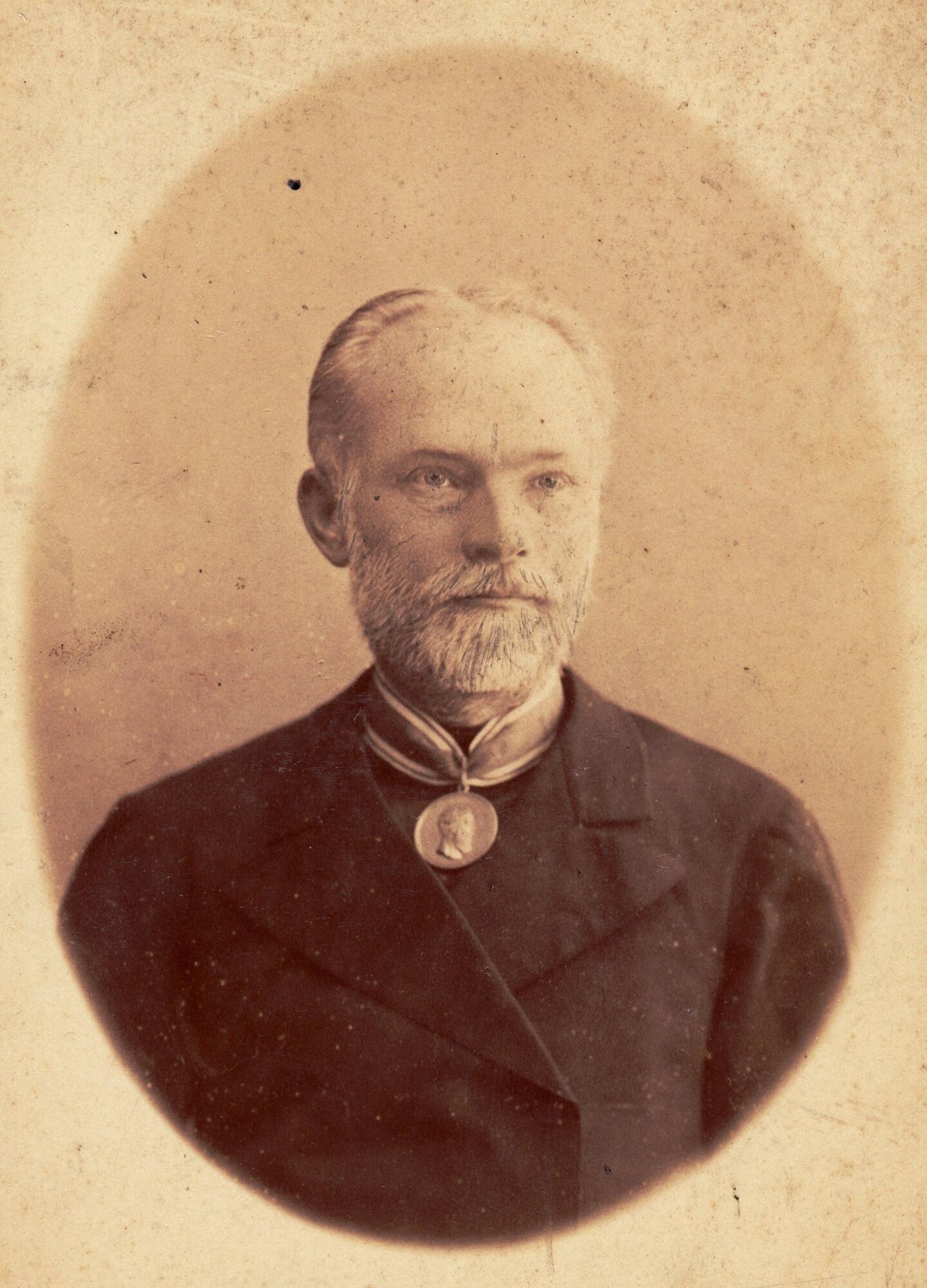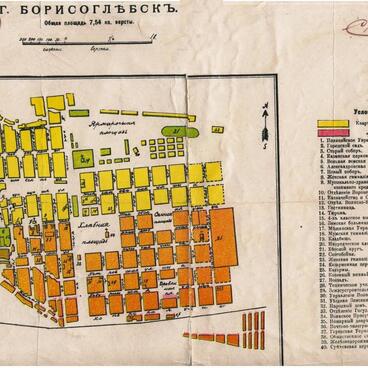Dmitry Myagkov, a merchant by trade, was a prominent figure in the social and economic life of Borisoglebsk, he was a member of city public authorities, city council, and a city administration.
Dmitry Myagkov’s main specialization was flour-grinding. He administered ten mills with annual turnover of up to four million poods of wheat milled into flour. Product sales took place in Moscow, Yaroslavl, Kaluga, Tver, and many other cities.
In 1892 Dmitry Myagkov initiated a massive construction. On the site of his estate on Kirpichnaya street in Borisoglebsk he started to construct a six-storey steam powered mill equipped with electric lightning. The merchant wanted to make his mill a significant object for the whole Governorate. In connection with it Dmitry Myagkov concluded an agreement with a big company of the time Association of Iron Founding Industry and Machinery Production of Dobrovs and Nabholz in Moscow for equipment supply.
The mill started to work two years later. At first there were four steam-generating units installed in there, but a few years later in the process of modernization three more units were added to them.
Dmitry Myagkov’s enterprise broadened and turned into the family business. In 1889 his son Yefim Myagkov installed a mill at the railway station Ternovka in Borisoglebsk Uyezd. It had a 100-horse-power steam-generating unit.
Unfortunately, in 1900 the fire destroyed the main merchant’s assets, which forced him to apply to his opponents for help. The creation of The Second Association of Flour Millers in Borisoglebsk in 1901 was a result of it. The association bought a burnt complex. The renovated mill had electric lightning and new equipment installed in there. One hundred twenty people worked for it, grinding around 2,6 million poods of wheat a year.
It’s noteworthy that Dmitry Myagkov’s son Yefim Myagkov organized the construction of People’s House, which was supposed to become a cultural centre for the citizens of Borisoglebsk, in 1911.
Dmitry Myagkov’s main specialization was flour-grinding. He administered ten mills with annual turnover of up to four million poods of wheat milled into flour. Product sales took place in Moscow, Yaroslavl, Kaluga, Tver, and many other cities.
In 1892 Dmitry Myagkov initiated a massive construction. On the site of his estate on Kirpichnaya street in Borisoglebsk he started to construct a six-storey steam powered mill equipped with electric lightning. The merchant wanted to make his mill a significant object for the whole Governorate. In connection with it Dmitry Myagkov concluded an agreement with a big company of the time Association of Iron Founding Industry and Machinery Production of Dobrovs and Nabholz in Moscow for equipment supply.
The mill started to work two years later. At first there were four steam-generating units installed in there, but a few years later in the process of modernization three more units were added to them.
Dmitry Myagkov’s enterprise broadened and turned into the family business. In 1889 his son Yefim Myagkov installed a mill at the railway station Ternovka in Borisoglebsk Uyezd. It had a 100-horse-power steam-generating unit.
Unfortunately, in 1900 the fire destroyed the main merchant’s assets, which forced him to apply to his opponents for help. The creation of The Second Association of Flour Millers in Borisoglebsk in 1901 was a result of it. The association bought a burnt complex. The renovated mill had electric lightning and new equipment installed in there. One hundred twenty people worked for it, grinding around 2,6 million poods of wheat a year.
It’s noteworthy that Dmitry Myagkov’s son Yefim Myagkov organized the construction of People’s House, which was supposed to become a cultural centre for the citizens of Borisoglebsk, in 1911.



